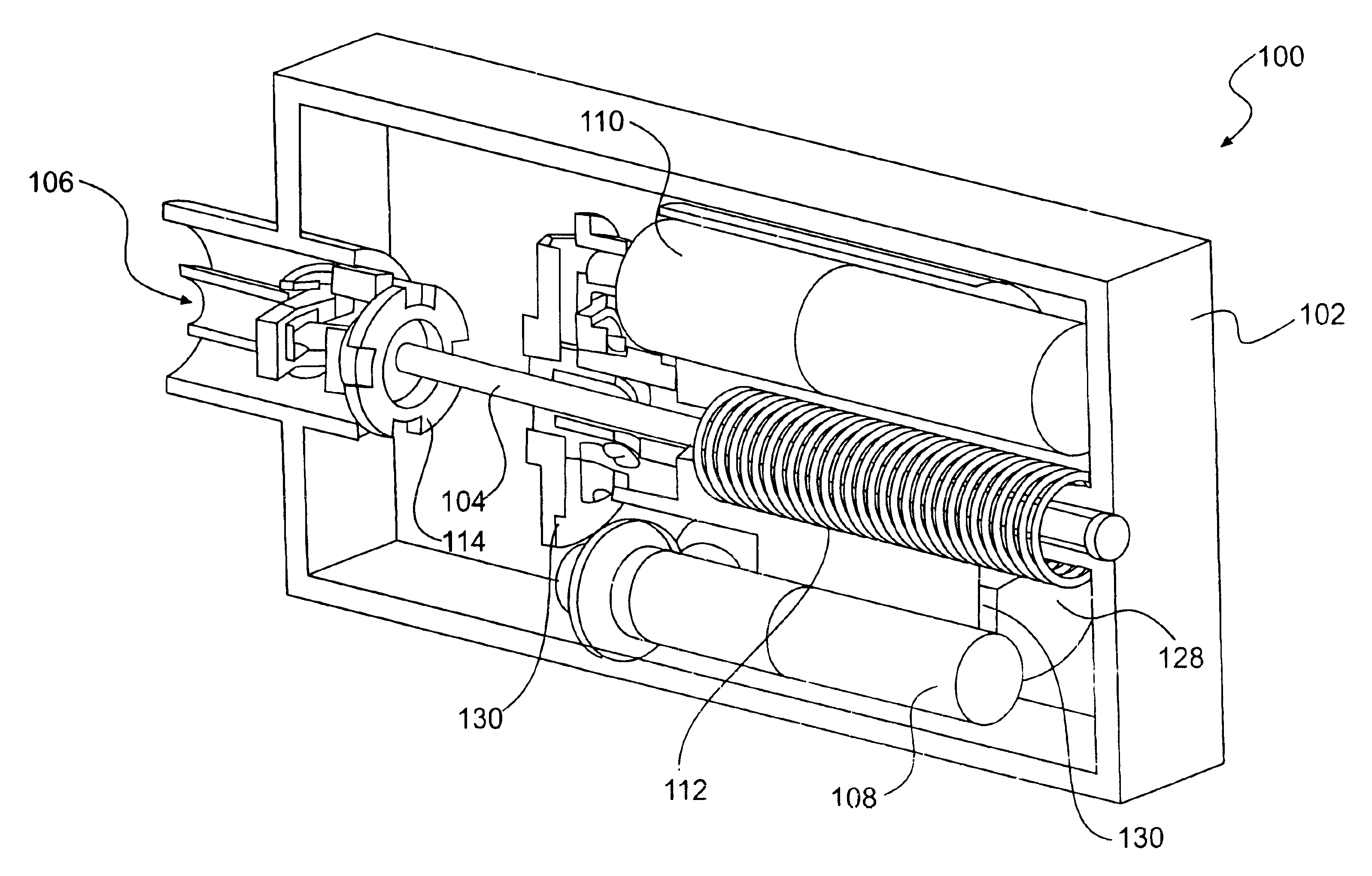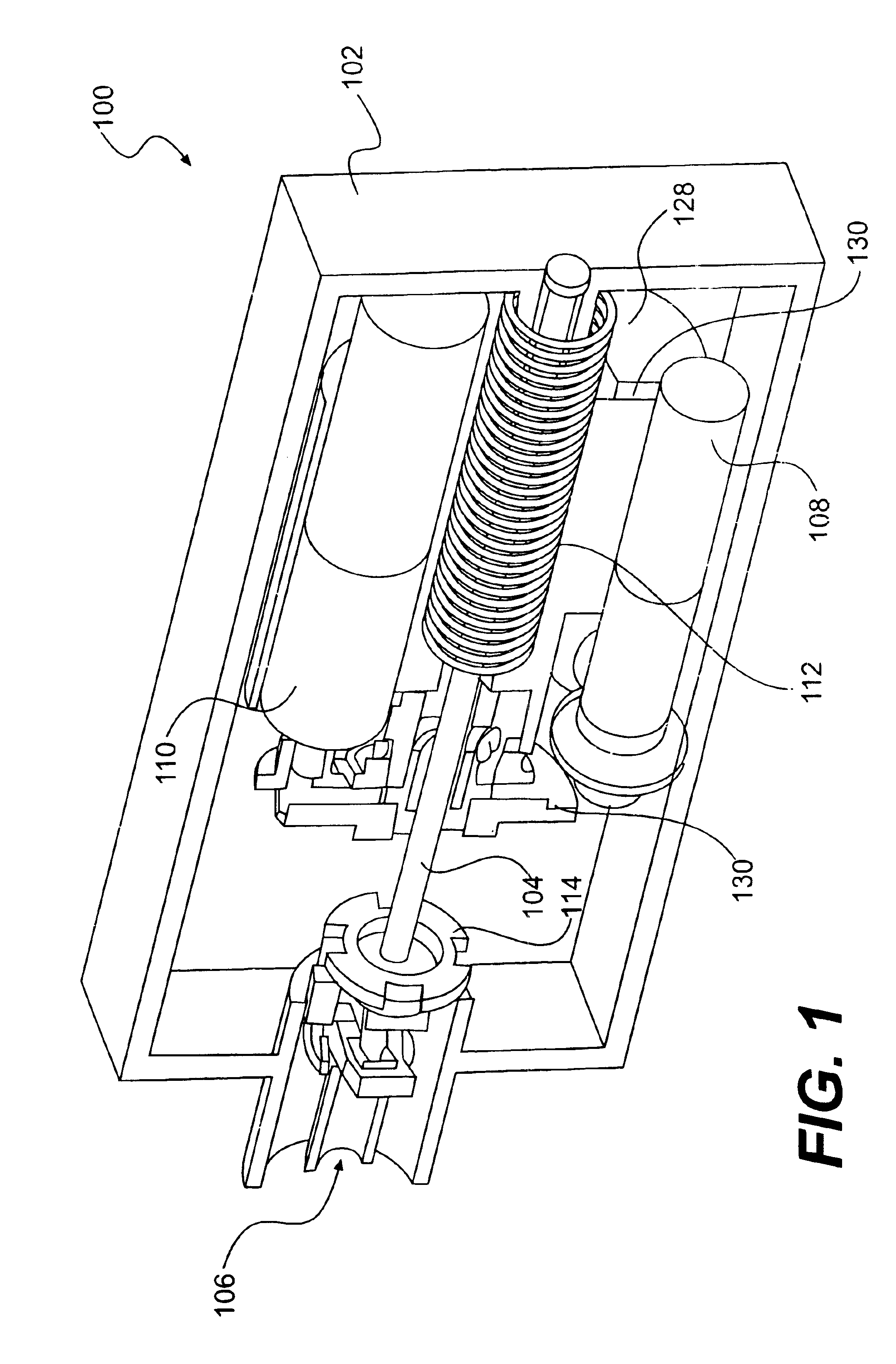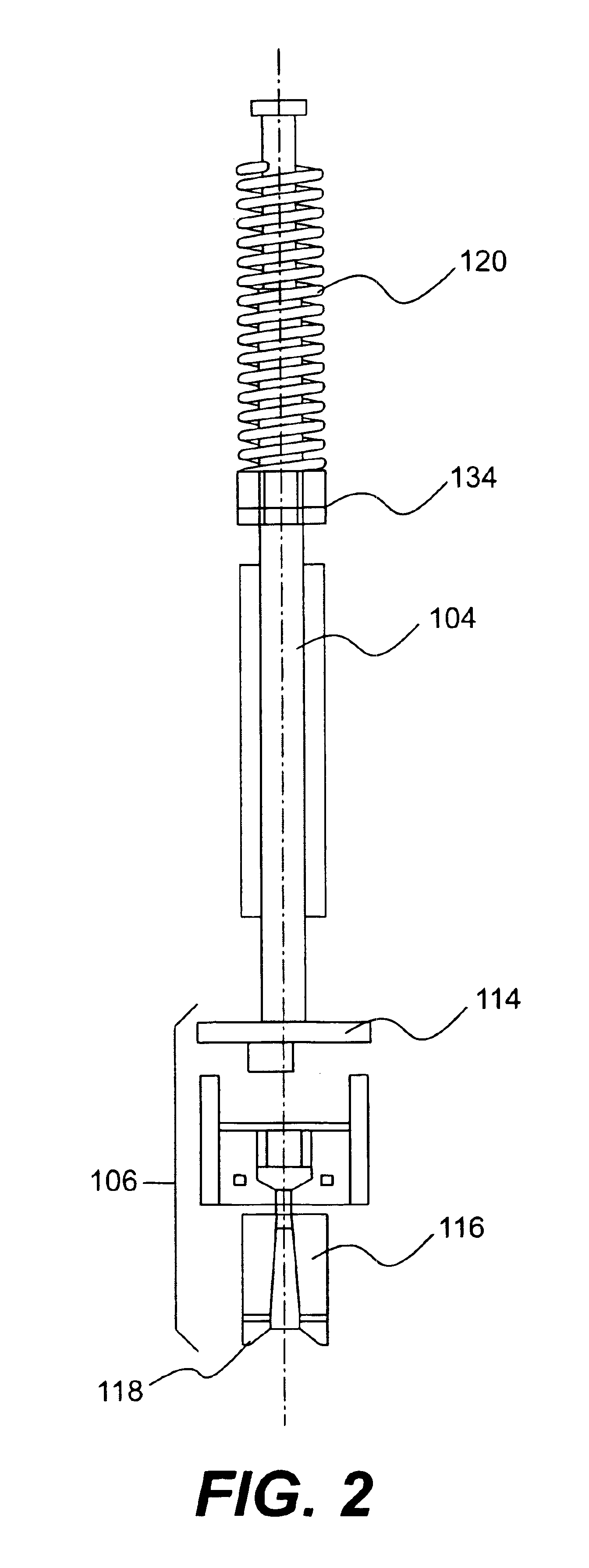Corer-grinder
a corer-grinder and rotary technology, applied in the field of low mass, multi-functional geologic sampling and coring devices, can solve the problems of adding bulk and weight, affecting the accuracy of coring, so as to reduce the diameter of the tip and eliminate any chance of jamming
- Summary
- Abstract
- Description
- Claims
- Application Information
AI Technical Summary
Benefits of technology
Problems solved by technology
Method used
Image
Examples
Embodiment Construction
FIG. 1 is an orthogonal view of the corer sampler element, represented generally as 100, of the corer grinder apparatus of the present invention. Housing 102 encases a shaft 104 that is connected to claw assembly 106. Shaft 104 is located through the middle of hammer unit 130 which houses the drive motor 108 and coupling motor 110. Both motors are positioned proximate one end of housing 102 that is opposite the end of housing 102 proximate the claw assembly 106. During coring, both drive motor 108 and coupling motor 110 inside the housing 102 will rotate. Coupling motor 110 turns a coupling that transmits the rotary motion to shaft 104 which extends from the motor end of housing 102, passing through coil strike spring 112, beyond which shaft 104 connects to claw assembly 106. Drive motor 108 rotates a large gear 128 (not shown) that lifts the entire hammer unit 130 and simultaneously compresses spring 112. As persons of ordinary skill will recognize, means other than a gear may be u...
PUM
 Login to View More
Login to View More Abstract
Description
Claims
Application Information
 Login to View More
Login to View More - R&D
- Intellectual Property
- Life Sciences
- Materials
- Tech Scout
- Unparalleled Data Quality
- Higher Quality Content
- 60% Fewer Hallucinations
Browse by: Latest US Patents, China's latest patents, Technical Efficacy Thesaurus, Application Domain, Technology Topic, Popular Technical Reports.
© 2025 PatSnap. All rights reserved.Legal|Privacy policy|Modern Slavery Act Transparency Statement|Sitemap|About US| Contact US: help@patsnap.com



